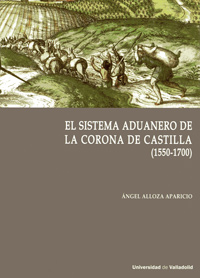THE CUSTOMS SYSTEM IN THE CROWN OF CASTILE (1550-1700)
Keywords:
Crown of Castile, 17th century , foreign trade, domestic tradeSynopsis
Studying Spanish foreign trade, and especially calculating its movements, necessarily requires a precise understanding of the accounts and the complex customs system maintained by the different administrations: royal, municipal, and feudal. This research allows us to understand not only the trade flows and their participants, but also one of the Treasury's main sources of income: taxes levied on foreign trade. For some historical periods, we have valuable work by, among others, M. A. Ladero Quesada, J. M. Bello León, R. Carande, P. Ortego, M. Ulloa, J. E. Gelabert, and H. Lapeyre. Particularly valuable are the studies of the latter researcher, who, in addition to drawing on the thousands of documents held in the General Archive of Simancas, used the collections of the Simón Ruiz archive, one of the best repositories of commercial documents for 16th-century Europe and currently held by the Medina del Campo Fair Museum Foundation. However, our knowledge of the events of the 17th century was very limited. This drawback is perfectly compensated for by A. J. Alloza Aparicio in this book, rich in data, suggestions, and nuances, which straddles the history of trade and taxation. In it, we appreciate how within the complex fiscal system of the Crown of Castile, as with other revenue items of the Treasury, there is a multiplicity of customs regimes. Many are distinct from those existing in other territories of the Spanish Monarchy and even differ in some parts from others within the same Crown. Many of them are inherited from the Middle Ages and will last well into the 18th century. All this makes research difficult and, above all, the ability to establish a comprehensive analysis. These difficulties are resolved by the author. Through the study of his extensive data, we can reconstruct some aspects of Spain's foreign and domestic trade in the 17th century. We are shown the various goods exchanged, as well as their merchants and the tax agents of the Treasury. The result reflects a very lively economic activity. But, at the same time, the study of the customs regime of Castile in the 17th century reveals an exhausted treasury with a predatory fiscal state, seeking to obtain revenue at every turn, even if this meant worsening the economic crisis that ravaged the Castilian territories during the 17th century. Consequently, this book is another contribution to the study of this crisis and the decline of the Habsburg Monarchy, demonstrating, moreover, the absolute necessity that the Bourbons had to remodel the customs regimes in the 18th century.

Price
21.15 EURPublished
Collection
Categories
Right Holder
Ediciones Universidad de Valladolid y autor(es)/autora(s) 2019License

This work is licensed under a Creative Commons Attribution-NonCommercial-NoDerivatives 4.0 International License.

